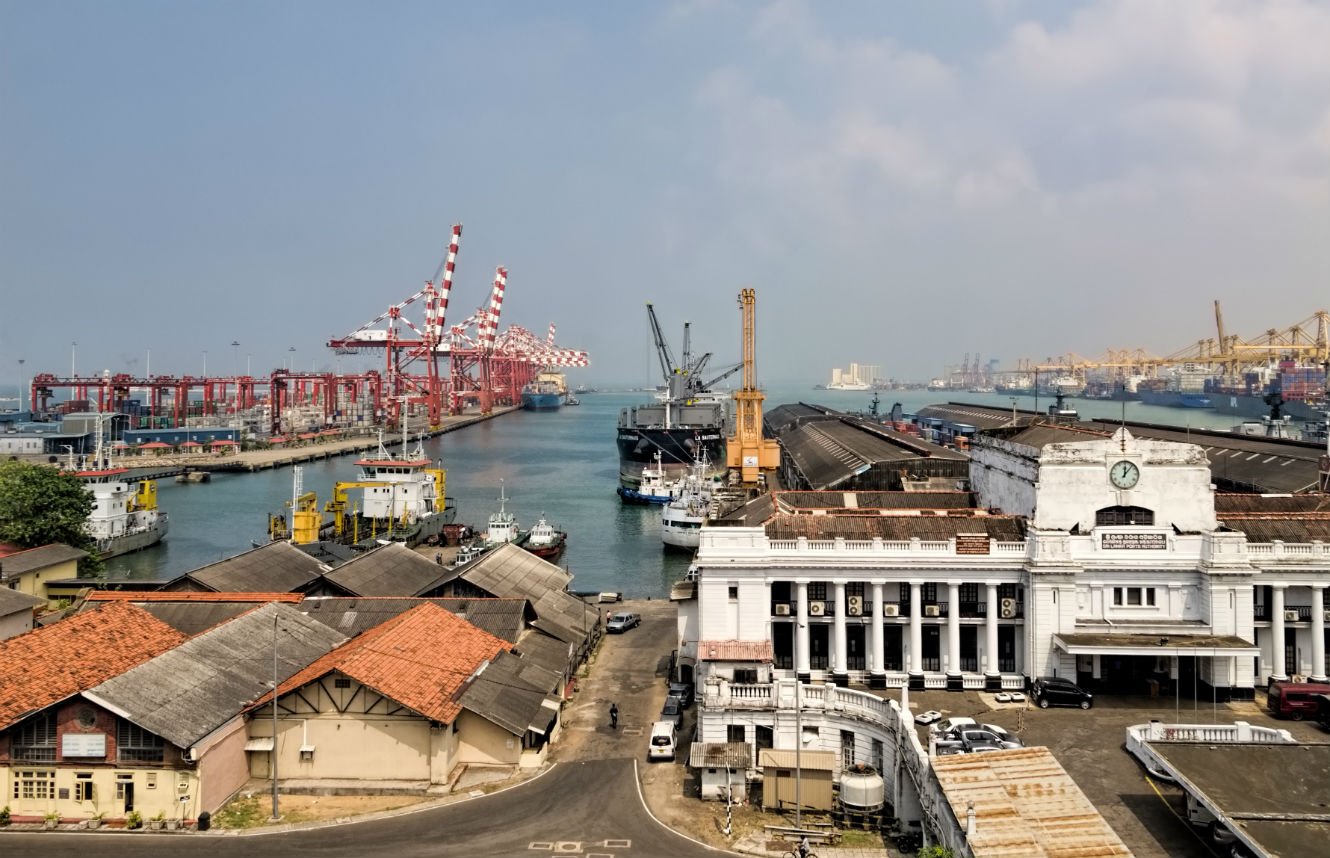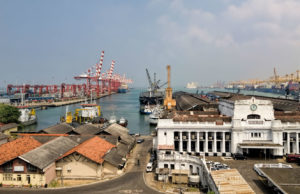It’s impossible to understand China’s military strategy without understanding its economic policy. Most prominently, the Belt and Road Initiative seeks to invest in infrastructure to connect Chinese commerce to the world. The initiative has also resulted in the overseas deployments of warships and submarines as well as ground force missions for training and peacekeeping – things that China once eschewed as the stuff of hegemons and imperialists. China’s incursions into Africa began as economic ventures but evolved into a growing military presence, resulting in China building its first foreign base in Djibouti and becoming the second-largest arms supplier in Africa, after Russia. Now, some are concerned Beijing could do the same in Latin America.
In the Indo-Pacific, China’s expanding military presence does not consist only of illegal island reclamation projects in the South China Sea, belligerent confrontations with the Japanese in the East China Sea, and overt show of force operations around Taiwan with improved military capability. Rather, China’s incursions and influence are an integrated and deliberate element of its mercantilist economic policy.
Examining how China uses economic tools to expand its military presence provides a more effective route toward reversing Chinese military momentum. This is especially important because the United States has not been able to curtail China’s military positioning through conventional military means alone. At the recent Shangri-La Dialogue and East Asia Summit, ASEAN nations appeared to demonstrate a wariness over U.S. defense policy toward China, indicating the need to explore a different approach to security relationships. The United States and its allies should shift their paradigm for countering the China challenge – a paradigm that, today, is largely military-focused. Specifically, the United States should steal a page from China’s own playbook and incorporate competitive economic tools into a broader framework for managing China’s regional military incursions.
Rewriting the Rules
China has successfully circumvented America’s military-first security model, using lawfare, political warfare, predatory economics, and proxy forces to realize outcomes that were once only achievable via conventional military means. With those tools, China exploits the gap between the U.S military’s mere presence and the actual use of lethal force to achieve a military end. Once a favorable security position is established, China emerges from that gray zone of competition by openly emplacing or displaying credible lethal force to retain and defend its gains. The most well-known example is China’s high-stakes gamble in the South China Sea, which started with a cordon of fishing boats and construction crews but might well result in a settlement with regional claimants as they work through a draft Code of Conduct. Though China’s incursions in the South China Sea are not the result of economic tools specifically, the case shows how China is able to gain territory or position using non-lethal methods that reduce the risk of conventional confrontation.
The same framework explains how China uses investment and other economic tools to create military advantages – without explicitly using its military. The Belt and Road Initiative is the main investment-focused framework through which China has generated many security outcomes. These range from the military base in Djibouti to the creation of the Shanghai Cooperation Organization, which promotes military cooperation and intelligence-sharing and includes a number of nation who have embraced the Belt and Road. Although China has grown militarily, economics underlies many of its military gains.
As Ferial Saeed noted in a recent commentary:
“China…has accumulated strategic depth in the Asia-Pacific as a result of its economic weight. While the United States provides Asian states “security goods” in the form of its forward deployed presence and regional balancing, Asian states depend on China for “economic goods.” China is the region’s economic powerhouse, and as a result, Asian states must at least consider, if not accommodate, Chinese interests.
Yet America remains focused primarily on improved lethality and conventional confrontation. The National Defense Strategy posits that creating a more lethal force is the way to balance against China’s whole-of-nation effort. Though the document does incorporate some necessary discussions of additional means, such as interagency and regional partnerships, these discussions are not as detailed as the ones about lethality and preparedness for conflict. To effectively counter Beijing, the U.S. security paradigm needs to move beyond a binary conception of peace and conflict premised on the idea that conventional military means alone can bind China to licit and transparent forms of growth and expansion.
It is tempting to assume that pursuing overmatch of China’s lethal means is the most effective path to disrupting its expansion. But that approach ignores the clear evidence that much of Beijing’s success was achieved through a comprehensive political and economic approach. As David Ucko and Thomas Marks wrote for War on the Rocks recently, “While today there is a broad realization that ‘you cannot kill your way out of this war,’ and that greater integration of different functions is needed, we have yet to see serious implementation of such slogans — they have prompted neither a reorganization of the instruments of state nor injected greater modesty about what force can achieve in isolation.”
Michael J. Green’s discussion of the diplomatic dust-up in Vanuatu in April identified the type of rethinking necessary for effective U.S. pushback against China’s military expansion. In the Vanuatu incident, China boldly attempted to explore basing in a British Commonwealth member nation within the Australian sphere. The effort was largely facilitated by Chinese infrastructure investment in the poor island nation, illustrating that military opportunity is inherent in China’s economic strategy and that military parity with China cannot be achieved primarily by conventional lethal means. China’s incursion into Vanuatu was enabled by tools that, though they are economic and not military in nature, nonetheless help to form a hardened barrier to U.S. interests in the region. Green specifically highlighted competitive investment and diplomacy as ways to reverse China’s “coercive or subversive establishment of military infrastructure across the Indo-Pacific.”
The Economics of Military Expansion
China is disrupting America’s role as a regional security guarantor by providing tangible development to the Indo-Pacific in the form of ports, airports, telecommunications, roads, and other infrastructure. These investments are not being competitively matched by the United States or non-Chinese regional development funding. Chinese investment ostensibly enables less prosperous countries to grow, but there is mounting evidence that many infrastructure projects are designed for dual-use military capability to “protect” regional claims and economic ventures. To ensure that infrastructure projects support China’s requirements, including military ones in particular, Chinese banks frequently stipulate in their loan terms that projects must be designed by Chinese companies with labor furnished by a majority of Chinese workers.
China’s use of economic development as an entry for its diplomatic and military efforts has effectively made it a payday lender, creating debt traps for those countries and entities willing to accept Chinese terms. Christine Lagarde, head of the International Monetary Fund, recently joined the chorus of concerned leaders warning of the risks of accepting Chinese loans. Recipient countries are transferring infrastructure projects back to the Chinese, either directly or through long-term leases, because of inability to pay the loans back. Sri Lanka and Pakistan have accepted loans from Chinese state-owned banks and are now dealing with consistent project delays, spiraling deficits, and sovereignty issues. Chinese private investment has been flowing into the Solomon Islands on Guadalcanal for a commercial fishery, airport, resort, and a re-opened gold mine. The attention from Chinese investors and their efforts to solicit Australian businessmen, coupled with the strategic position of these developments between Australia and New Zealand, created substantial worry in Canberra. The Australian government, spurred by security concerns, was pushed to invest in the delivery of an underwater internet cable in the Solomons to pre-empt Huawei from doing it first.
China’s Achilles Heel: Unsustainable Debt
China is obscuring the degree to which this expansion is fueled by unsustainable debt, and herein lies an opportunity for the United States. China’s debt-to-GDP ratio is estimated at 257.1 percent, with shadow banking and debt exchange hiding the full extent of the problem (though it’s worth mentioning that, with the U.S. debt-to-GDP for 2018 at 107 percent, both countries are in dire straits). Although a case can be made that China has an “export-led” growth model, after the 2008 financial crisis its model became vastly more investment-led than export-led. All of China’s largest businesses are state-owned enterprises, which creates a unique fragility: The fortunes of these firms are intimately tied up with those of the state itself. Domestically, the Chinese government is underwriting its private industry development in artificial intelligence, telecommunications, robotics, biotech, and aviation as part of the Made in China 2025 plan. Yet this robust debt-fueled plan has not resulted in improved market penetration of domestic products or efficiency and productivity.
Much of China’s debt is denominated in dollars, which creates a cycle of needing higher exports to earn hard currency to repay its dollar-denominated debt. If world growth slowed down or the United States went into a recession, China’s exports would fall precipitously, as would its ability to pay its debts. The debt could be offset if the renminbi became a fully convertible currency, but until then, China is betting on achieving its goals in time to produce a return that can pay the debt or negate the cost. To further mitigate the debt problem, it is transferring the burden of development onto countries who have accepted Chinese offers of credit. When these countries cannot pay, China assumes the project, in effect writing off the debt. In either case, if China is paid back or extract new terms that transfer control back home, it wins the financial and influence fight. Exploiting Chinese debt is a vastly undervalued way in which the United States and its partners can asymmetrically engage China on its own terms.
Two Can Play at This Game
The United States should create an environment in which industry in the Indo-Pacific region can diversify away from China. Economic and trade engagement can deny opportunities for Chinese investors to conduct the economically exploitative tactics, which presage military overtures. The United States in fact has a marked advantage in this realm. The Chinese government is in the business of picking winners in its technology sector to enable its domestic manufacturers to be competitive in the world market. The U.S. advantage is that American companies are already competitive to the standard that China is hoping to achieve. Since America does not need to play catch-up, the U.S. government can cut right to the chase by starting to promote competition and shaping the incentives for regional companies to migrate their manufacturing and regional development away from China. This is one of the few areas in which the United States still has the edge over the Chinese model – perhaps ironically given that the language of security, rather than economics, continues to dominate the discourse on how to counter China. For instance, Bilateral Investment Treaties are a key mechanism enabling U.S. companies to engage in foreign direct investment and enjoy the legal protections necessary to ensure fair and transparent business in the region.
The burden of developing infrastructure to encourage private investment and growth tends to fall largely on government-funded financing, given the high costs and need for expertise. It is for this reason that China has been able to leverage its national banks to provide the money for development and bear the brunt of the debt. China’s sponsorship of the Asia Infrastructure Investment Bank (AIIB) is an attempt to create a multilateral investment mechanism to reduce the burden on state-owned banks and sustain Chinese investment while promoting a narrative of creating a system in Asia free from American control. A stronger Asia Development Bank would provide alternatives to the AIIB, especially if the bank’s Private Sector Operations Department succeeds in its effort to increase the flow of private capital to complement government spending. Similarly, reinforcing the Millennium Challenge Corporation, which allows open tender bids from partner countries, can be an effective counter to Chinese state bank loan terms. Reinforcing its capacity for outreach will encourage other nations to avoid China’s debt trap and enable the United States and partners to convey the value of legitimate development funding to sustain competitive growth in the region.
Economic Competition as a Path to Expanded Military Cooperation
China’s commitment to a debt-fueled rise has placed it on a course where any shift away from planned growth can affect both domestic economic stability and military spending. To fully take advantage of this vulnerability, the U.S. military should take a back seat and, as the National Defense Strategy stipulates, enable “interagency counterparts to advance U.S. influence and interests.” It’s time to think about how the Departments of State, Treasury, and Commerce can complement the Defense Department when it comes to countering China.
A 2016 report by the Center for Strategic and International Studies (CSIS) recommended some key areas in which the United States can compete against Chinese infrastructure investment. It cited areas such as direct financing or guarantees of project investment (through the Millennium Challenge Corporation or USAID) as well as specialized support for project preparation, feasibility studies, and similar work through the U.S. Trade Development Agency. The challenge is that government and private financing of infrastructure is risky and costly, just as China has found with repayment of loans and project delays. The CSIS paper also noted that there is no coordination mechanism for U.S. agencies to establish a comprehensive infrastructure investment strategy and that the U.S. government stopped supporting direct investment to foreign infrastructure years ago. Yet because the United States does retain a majority position on the World Bank, Inter-American Development Bank, and Asia Development Bank, it has a large role to play in shaping the direction of these institutions. Along the same lines, East-West Institutehas recommended the formation of a National Security Council Interagency Policy Committee exclusively devoted to an interagency approach towards China.
China’s economic entry into vulnerable and needy countries makes it harder for the United States to project power or credibly sustain security guarantees in those nations. To build trust, Washington needs to prove that it is invested in more than conventional military options and produce tangible economic and diplomatic counters to Beijing’s practices. China made loan arrangements it knew would result in debt traps, which it then exploited to introduce military presence as a condition of loan renegotiation. The United States should support manageable and responsible investment, but it cannot simply buy its way into military partnerships as an explicit condition of economic support. Rather, it should introduce security arrangements in a way that takes into account the host nation’s perspective, while still eliminating China’s opportunity to commence an economic approach that results in a military outcome.
The idea here is not to collapse the Chinese economy or totally undercut its security, but rather to open the path for other cooperative security efforts while limiting China’s capacity to make economic arrangements that result in the emplacement of conventional forces. Using economic competition to complement security measures creates a compounding effect that both the public and private sector can reinforce. Furthermore, it doesn’t rely entirely on government spending alone to improve regional security.
China has proved an unreliable economic partner, exploiting investment for military advantage. Moreover, its lack of compliance with economic and financial norms and standards has been documented extensively. For the United States, investment offers opportunities to promote security for regional partners through everything from resilient telecommunications to assistance in reinforcing maritime claims. It is within a reinvigorated competitive economic space that the United States will be able to introduce a new security model to rebalance its relationship with China while broadening America’s role beyond simply that of a security provider.
C. Travis Reese is a retired Marine and graduate of the School of Advanced Warfighting. He is currently a defense strategy and policy consultant in Washington, D.C. The opinions expressed are those of the author alone and do not reflect those of the U.S. Marine Corps, the Department of Defense, or any part of the U.S. government.
Warontherocks







































